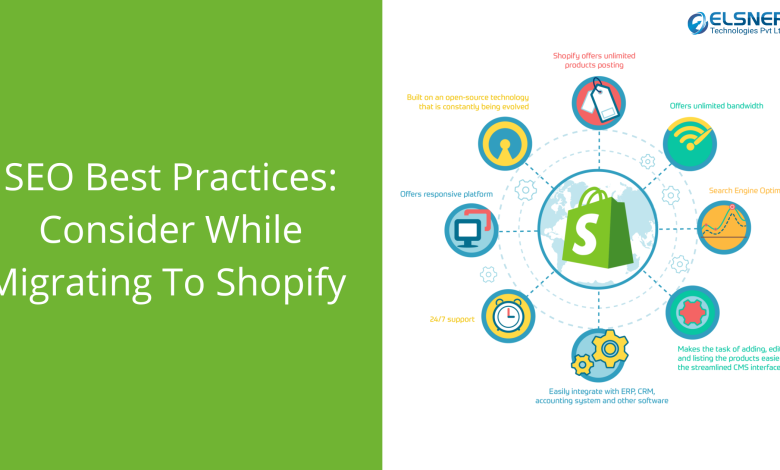SEO Best Practices: Consider While Migrating To Shopify

Shopify is a fantastic E-Commerce platform for entrepreneurs who are ready to take the next big step in their business adventure. The platform offers a complete bundle of features and functionalities to scale your business to the next level.
From enhanced bandwidth, functional plug-ins, and remarkable features to around-the-clock support, this eCommerce platform offers you everything necessary to boost your traffic and sales.
However, Platform and SEO migration involve several risks and complications. The last thing you want for your business is to lose all your hard-earned domain authority, precious backlinks, and organic traffic.
With professional Shopify development services, you can smoothly complete the transition without adversely affecting your online foothold.
Prepare For Shopify Site Migration
Before initiating your store migration to the platform, it is suggested that you hire a professional Shopify expert to help you with the process.
Without proper planning and execution, you are store might suffer, and your organic traffic can be reduced by 50% within the first week of transition.
You should always have a strong team of Shopify developers and SEO experts throughout the entire process.
In simple words, the fundamental steps for site migration preparation include:
- Determining and confirming that Shopify is the correct platform for your E-Commerce requirements.
- Hiring a trained and experienced website designer
- Consulting an eCommerce SEO expert
SEO Best Practices To Consider During Shopify Site Migration
Hire Shopify developers to design and develop your Shopify Store.
The first step in the migration process is signing up with your credentials and choosing a plan that best suits your business requirements.
To improve the SEO setup of your store, consider the following:
Navigation
The navigation framework of your store. Ensure it is easy for both your customers and Google crawlers to navigate through your web pages.
Shopify Collections
Similar items using the collections feature. This feature is critical for SEO as well.
Web Page Migration
Review and edit your important web pages. Pages including “Contact Us”, “About us”, “Privacy Policy”, “Shipping and delivery”, “Returns and exchanges”, etc., need to be informational to build customer trust.
Product Page Migration
For product pages, choose transactional keywords. Although automatically creates product page URLs based on your product name, you have the option to edit them. If the changes are applied to a published product, an automatic 301 redirect is created to divert your customers to the new URL.
Blog Migration
In the Shopify blog section, ensure auditing the existing content and migrating useful content to capitalize on them.
Assess The Canonical Link Structure
The canonical link structure conveys to the search engines which page you want to rank. Pay special attention to this factor during Shopify app development.
Create Backups
Your data and information are too precious. Ensure backing up everything.
Establish 301 Redirects From Old Ecommerce Website To Your New shopify Store
Cheating 301 redirects can be time intensive, but it’s crucial for SEO. Without 301 redirects, you can lose the valuable backlinks and page authority that you have achieved over the years.
Timing
Reputed shopify development services will not attempt migration during the peak period.
Update Internal Linking Structure
This prevents unnecessary 301 and broken 404 redirects and prevents adversely affecting your SEO score.
Wrapping Up
Migrating to the Shopify platform doesn’t mean losing your hard-earned SEO wins.
Follow these best SEO practices and hire professional Shopify development services to avoid complications during the migration process.




